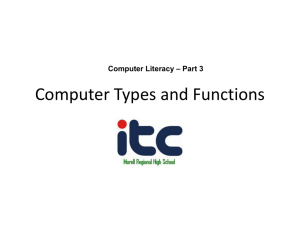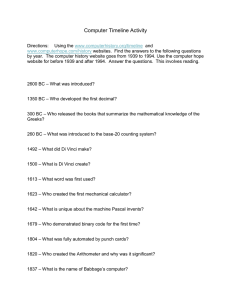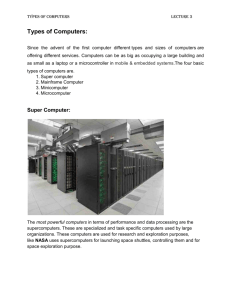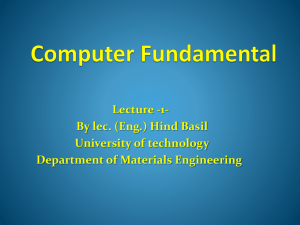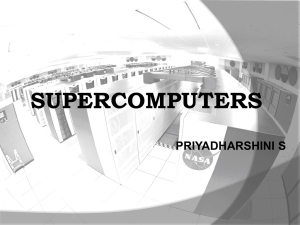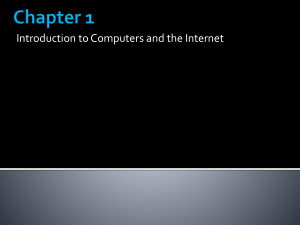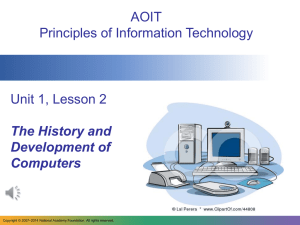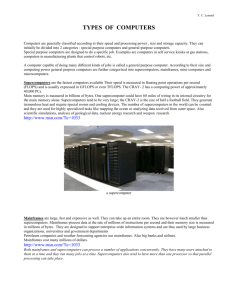Information Technology - Lesson Portal
advertisement
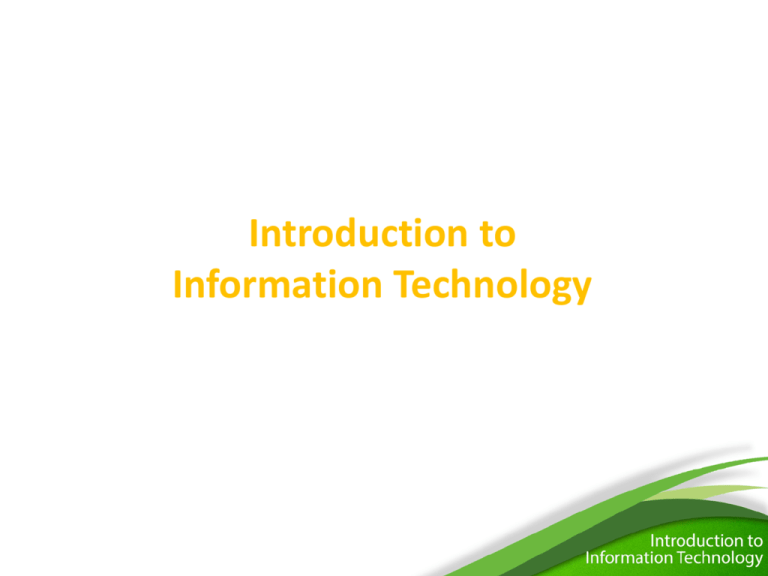
Introduction to Information Technology Introduction to Information Technology OBJECTIVES Introduction to Information Technology prepares students with the knowledge and background of the different computer areas and careers. In this course, students will be introduced to topics dealing with hardware, software, networking, interactive media, telecommunication, personal technologies, and new and emerging devices and technologies. Introduction to Information Technology What is Information technology (IT) wikipedia.org- is the application of computers and telecommunications equipment to store, retrieve, transmit and manipulate data, often in the context of a business or other enterprise. www.entrepreneur.com - A term that encompasses all forms of technology used to create, store, exchange and utilize information in its various forms including business data, conversations, still images, motion pictures and multimedia presentations . Introduction to Information Technology Trivia The term Information Technology (IT) was coined by Jim Domsic of Michigan in November 1981. Domsic created the term to modernize the outdated phrase "data processing". Introduction to Information Technology History of Information Technology The basic concept of Information Technology can be traced to the World War II alliance of the military and industry in the development of electronics, computers, and information theory. After the 1940s, the military remained the major source of research and development funding for the expansion of automation to replace manpower with machine power. Introduction to Information Technology Trivia The term "computer", in use from the early 17th century (the first known written reference dates from 1613), meant "one who computes": a person performing mathematical calculations, before electronic computers became commercially available. Introduction to Information Technology History of Information Technology Since the 1950s, four generations of computers have evolved. Each generation reflected a change to hardware of decreased size but increased capabilities to control computer operations. -First generation used vacuum tubes -Second used transistors -Third used integrated circuits -Fourth used integrated circuits on a single computer chip. Advances in artificial intelligence that will minimize the need for complex programming characterize the fifth generation of computers, still in the experimental stage. Introduction to Information Technology History of Information Technology The first commercial computer was the UNIVAC I, developed by John Eckert and John W. Mauchly in 1951. It was used by the Census Bureau to predict the outcome of the 1952 presidential election. For the next twenty-five years, mainframe computers were used in large corporations to do calculations and manipulate large amounts of information stored in databases. Supercomputers were used in science and engineering, for designing aircraft and nuclear reactors, and for predicting worldwide weather patterns. Minicomputers came on to the scene in the early 1980s in small businesses, manufacturing plants, and factories. Introduction to Information Technology History of Information Technology UNIVAC I Introduction to Information Technology History of Information Technology Mainframe Computers vs Supercomputers Mainframes deal with problems constrained by input/output and which demand reliability above all else. Mainframes process the large amounts of data that come into them from external sources, such as credit card transactions or payroll processing. Supercomputers are designed to work on types of problems whose primary constraint is calculation speed. Supercomputers conduct large amounts of very fast and complex calculations on data stored in memory. Tianhe-2, aka Milky Way 2 Tianhe-2, a supercomputer developed by China's National University of Defense Technology, once more took home the title as the world's fastest computer, with a performance of 33.86 petaflops (quadrillions of calculations per second) on the Linpack benchmark. FLOPS: Floating-point Operations Per Second) Introduction to Information Technology History of Information Technology In 1975, the Massachusetts Institute of Technology developed microcomputers. The market for microcomputers increased dramatically when IBM introduced the first personal computer in the fall of 1981. SPECS IBM Personal Computer model 5150 with IBM CGA monitor (model number 5153), IBM PC keyboard, IBM 5152 printer and paper stand. OS IBM BASIC / PC DOS 1.0 CP/M-86 UCSD p-System CPU Intel 8088 @ 4.77 MHz Memory 16 kB ~ 256 kB Sound 1-channel PWM Thank you! “ The Only way to do great work is to love what you do ” -Steve Jobs

